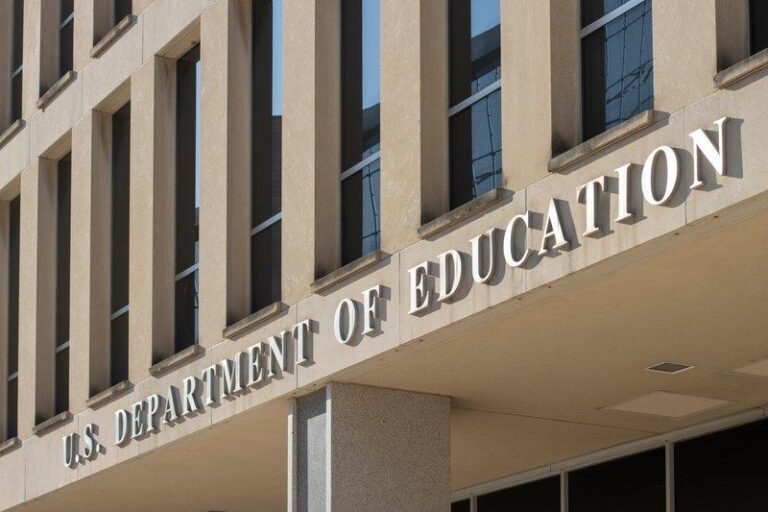The U.S. Department of Education has issued a stark warning to public schools nationwide, threatening to withhold federal funding over the implementation of Diversity, Equity, and Inclusion (DEI) initiatives. This move has sparked a contentious debate among educators, policymakers, and advocacy groups, raising concerns about the future of DEI programs in American classrooms. Critics argue that the threat undermines efforts to address systemic inequalities, while supporters claim it enforces compliance with federal guidelines. As the controversy unfolds, the ramifications for public education and marginalized communities remain uncertain.
Department of Education Issues Warning to Public Schools on Diversity Equity and Inclusion Policies
The Department of Education’s recent directive has sent shockwaves through public school systems nationwide. Officials have warned that federal funding could be jeopardized if schools continue to implement Diversity, Equity, and Inclusion (DEI) policies that are perceived to conflict with the current administration’s stance. This move reflects a growing political battle over how educational institutions address issues related to race, gender, and social justice. Critics argue the warning is a thinly veiled attempt to silence efforts aimed at creating more inclusive learning environments, while supporters claim it ensures a balanced approach to curriculum content without ideological bias.
School administrators face difficult choices amid this escalating pressure. Many are caught between federal mandates and local community demands. The Department’s enforcement memorandum outlined strict compliance requirements, emphasizing:
- Review and revision of current DEI curricula
- Elimination of materials deemed “divisive” or “indoctrinating”
- Increased oversight of staff training programs
Failure to adhere could result in funding cuts that threaten essential programs and resources. The table below summarizes the potential impact by funding area:
| Funding Area | Potential Reduction | Impact |
|---|---|---|
| Title I Grants | Up to 15% | Support for disadvantaged students |
| Teacher Training Funds | Up to 25% | Professional development programs |
| STEM Initiatives | Up to 10% | Science and technology education support |
Impact of Federal Funding Threats on School Programs and Student Support Services
Federal funding plays a critical role in maintaining and enhancing a wide array of essential school programs, from arts and music to science and technology initiatives. The Department of Education’s recent threat to withhold funds linked to Diversity, Equity, and Inclusion (DEI) efforts has sown uncertainty among educators and administrators. Many schools, already operating with tight budgets, may face tough decisions that could lead to the reduction or elimination of extracurricular activities, counseling services, and special education resources. This funding uncertainty directly jeopardizes educational equity, disproportionately affecting students who rely on these support services the most.
Beyond academic programs, student support services are integral to fostering a safe and nurturing environment. These include mental health counseling, anti-bullying initiatives, and diversity training—all of which contribute to well-rounded development and inclusivity. The potential cuts ripple across the entire school ecosystem, creating a chilling effect as educators hesitate to implement or sustain DEI policies. Listed below are some of the primary consequences schools may experience:
- Program Reductions: Loss of arts, STEM clubs, and after-school activities.
- Staff Layoffs: Decrease in counselors, social workers, and diversity coordinators.
- Resource Gaps: Limited access to materials and training for inclusive education.
| Impact Area | Potential Outcome | Effect on Students |
|---|---|---|
| Extracurricular Programs | Budget cuts | Reduced engagement |
| Student Counseling | Staff shortages | Increased mental health risks |
| DEI Training | Program elimination | Less inclusive culture |
Legal and Political Challenges Surrounding DEI Initiatives in US Education
The recent moves by the Department of Education signal a heightened scrutiny on Diversity, Equity, and Inclusion (DEI) programs within public schools, raising complex legal questions about the bounds of federal oversight and state autonomy. Critics argue that the Department’s threat to withhold federal funding over DEI-related policies may infringe upon First Amendment rights and the principles of local governance in education. Legal experts warn that such federal pressure could trigger a cascade of lawsuits, as school districts challenge what they perceive as federal overreach into curriculum decisions traditionally left to state and local authorities.
Politically, the controversy surrounding DEI initiatives has become a flashpoint in broader cultural and partisan conflicts. Legislators in various states have responded by crafting laws that either restrict or reinforce DEI programming, creating a patchwork of regulations that complicate uniform policy enforcement. The stakes are high, with federal funding—often critical for school operations—used as leverage. Key concerns fueling the debate include:
- Definitional disputes: What qualifies as DEI-related content and who decides?
- Accountability mechanisms: How is compliance measured and enforced?
- Impact on vulnerable groups: Ensuring DEI efforts serve historically marginalized students without causing backlash.
| Stakeholder | Primary Concern | Potential Outcome |
|---|---|---|
| Federal Government | Enforcement of anti-discrimination laws | Funding cuts for non-compliance |
| State Governments | Preserving local control over education | New state legislation; increased litigation |
| School Districts | Balancing compliance and local values | Program adjustments; legal challenges |
| Parents and Community Groups | Content transparency and student impact | Public protests; policy advocacy |
Strategies for Schools to Navigate Compliance While Upholding Inclusive Practices
Schools across the United States are facing mounting pressure to conform to federal mandates that challenge Diversity, Equity, and Inclusion (DEI) initiatives, putting administrators in a complex position. To balance compliance with preserving inclusive environments, districts are adopting multifaceted approaches that emphasize transparent communication and legal consultation. Establishing clear policies that align DEI objectives with federal guidelines can help mitigate risks without sacrificing the core values of inclusivity. Moreover, engaging community stakeholders—parents, educators, and students—ensures a collective understanding of the school’s commitment to equity while adhering to regulatory frameworks.
Key strategies include:
- Regular Training: Investing in ongoing professional development helps educators navigate evolving compliance requirements while supporting diverse student needs.
- Policy Audits: Systematic reviews of existing policies can identify potential conflicts and areas for adjustment.
- Inclusive Curriculum Design: Adapting lessons to reflect broad perspectives without contravening federal directives.
- Open Dialogue Forums: Creating spaces where concerns about DEI and compliance discussions can be openly addressed.
| Strategy | Purpose | Impact |
|---|---|---|
| Regular Training | Educator awareness | Reduced compliance risks |
| Policy Audits | Identify gaps | Aligned procedures |
| Inclusive Curriculum | Balanced content | Broader engagement |
| Open Dialogues | Community input | Greater transparency |
To Wrap It Up
As the Department of Education intensifies its scrutiny of Diversity, Equity, and Inclusion initiatives in public schools, the potential ramifications for federal funding loom large. This enforcement approach underscores a growing tension between federal oversight and local education policies, raising critical questions about the future of DEI programs across the nation. Stakeholders from educators to policymakers will be closely watching how these developments unfold, as the battle over educational priorities continues to shape the landscape of American public schooling.







